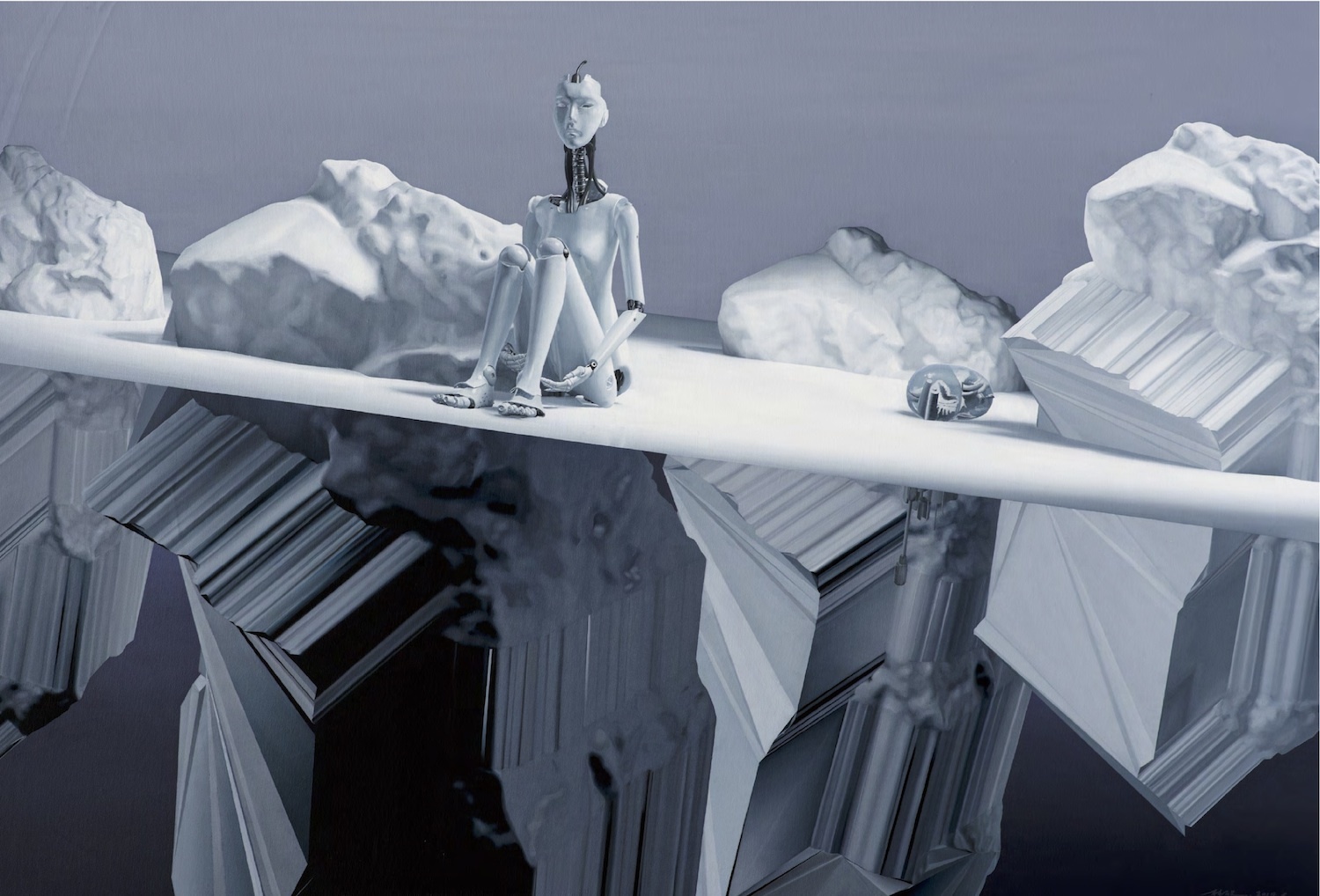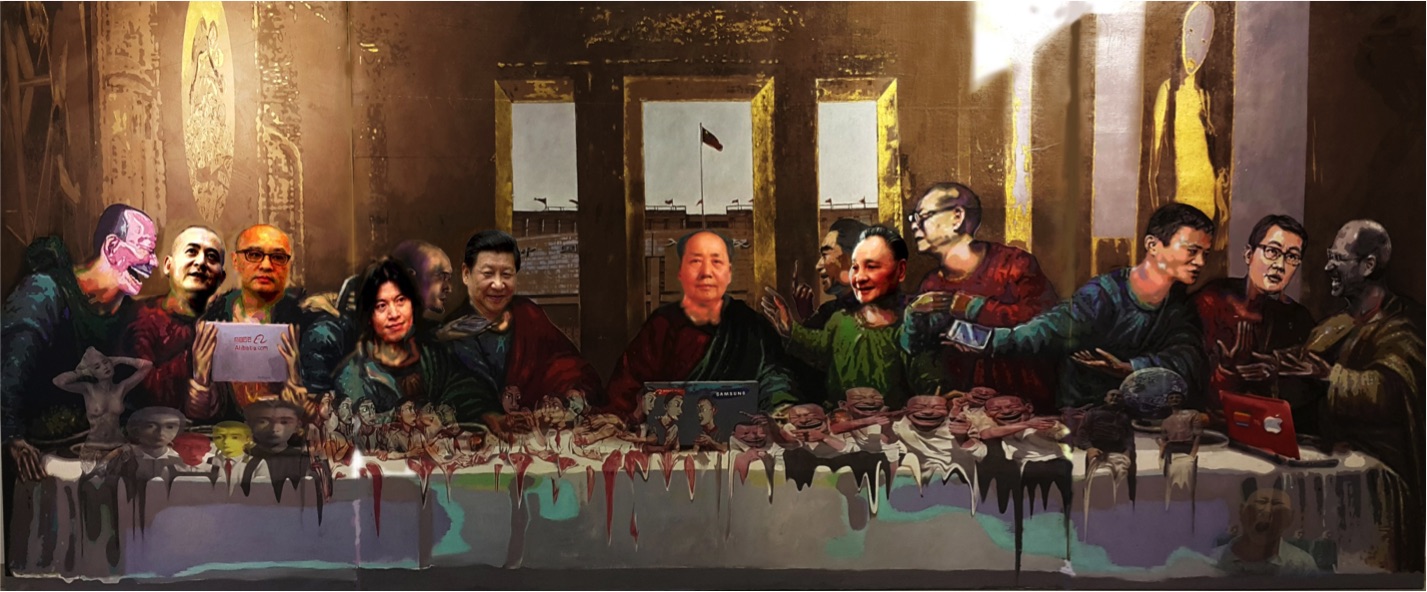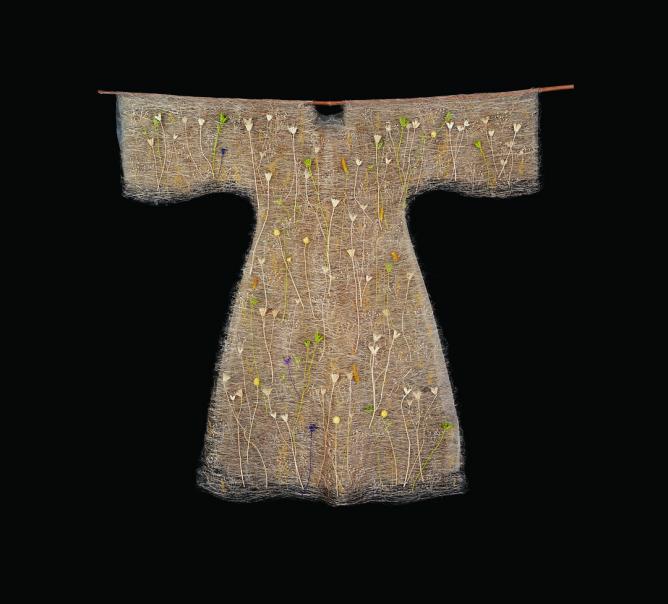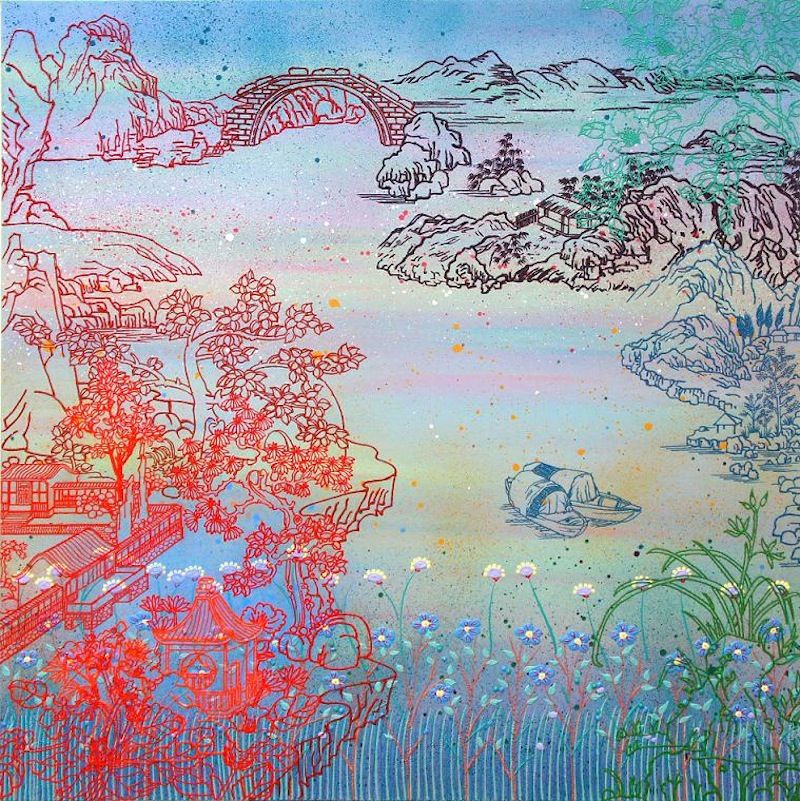The rapidly developing economy of China with its population of 1.3 billion has fueled not just economy , but also the growth of an important cultural industry, contemporary art Since the debut of Chinese artists on the international art stage in 1993 at the 45th Venice Biennale, Chinese participation has become a regular feature in all major international exhibitions.

China still remains as an unidentifiable country. However, it has been proved the potential of China as a country that can flexibly supply products for any kind of demand. Chinese Contemporary Art in today’s market represent ideas ranging from extremely delicate and aesthetic dimensions to a self-consciousness about the violent history of imposed changes. Also these artworks reflect, on a microscopic as well as macroscopic level, the on-going changes in China that made it one of the two giants along with United States, after the fall of other socialist states. By looking at Chinese Contemporary Art from various angles, it let us know that the artist is the most convincing witness of this age.
By, or against their own will, artists, who have to be the most individual beings, have hypersensitively responded toward totalitarian culture. After the new China was established in the mid 20th century, there was a history of violence and oppression on the other side of the dazzling growth, as it became a rival to Western capitalism. A system that opposes an imaginary or real enemy, needs to strongly crackdown on domestic opposition in order to seize hegemonic control from the external opposition. Whether the state has a credible cause like revolution or for the purposes of enlightenment with a bright vision, an argument based against the opposition is a similar idea to making the enemy into the opposition. In the midst of the conflict with capitalism, Chinese socialism became a capitalist system not be led by the economy but by the state. At here the nation monopolize the capital and even the violence. Not just the reform policy of the Chinese government, but also its role as the world’s workshop in the global market has brought tremendous upheaval to both domestic and foreign policy, revealing the contradiction of capital as being the same as that of Western imperialism.

Beyond Contradiction of Modernity
Reflecting the spirit of the times, Chinese Contemporary Art share subtleties with the modernization of Chinese society, as they are modern art. In this case, modernity has two faces that developed out of destruction. The equivocal form that not so much as capitalism or socialism has made them stood out both strength and weakness. The contradiction of capitalism like the gap between rich and poor in a classed society meets inefficiency, authoritarianism, and corruption, so social conflicts cannot be hidden but are instead used to create violent effects. Good examples of this can be seen in the Cultural Revolution or Tiananmen Square Massacre.

The anxiety and the fear of the change that appears frequently in Chinese modern art reflects the history of the one party system that has tried to conceal the actual violence it has perpetrated as well as the history of coercion suffered by many people. But this severe contradiction in Chinese society and the conflict it enacts prompts artists as the others of society and has therefore, paradoxically, become a fertile ground of content for art making. So, from the diverse possibility of art making itself, which has antagonized and acted against the system, we can identify the capability of the Chinaese people and its true identities.
The uncertainty of the modern era does not originated from chaos but from systematization. Systems, regardless of left or right, or even more when the two oppose each other, operates more as unified force. Here it is clear the new media artists of China are responding to this hostile force.
Art, Reflection of Uncertainty

The contemporary artworks from China show the intense wave of change to Chinese society are not a variable any more, but a constant. These changes, like them or not, right or wrong, have become a standing condition of living, so people just have learned how to live with them. Another characteristic of our time, is that the present is regarded as a transition period. Contemporary artists mix the uncertainty derived from the system with the internal workings of art making. The impact is internalized which then reverberates through varied formal devices.
Since 2005, a large amount of capital was put into the Chinese contemporary art market. We have to admit that the Chinese contemporary artists are pride of self-control. The fact that Chinese contemporary art can draw so much attention is closely related to the economic and political development of China. Second, the sudden prosperity of the Chinese contemporary art market has something to do with the non-academic tendency, such as the current financial policy. Third, the price of the contemporary works is soaring. With the increasing of the price, artists become more and more confident. It is the truth that the works with the highest price were the ones with a strong sense of post-colonialism created in 1990s. Capital investment in the Chinese contemporary art market has its advantages. In the current situation of China, it can help the Chinese contemporary art to free from the authoritative ideology. With the capital assistant, the Chinese contemporary art with the foundations and galleries can gain its academic value.
